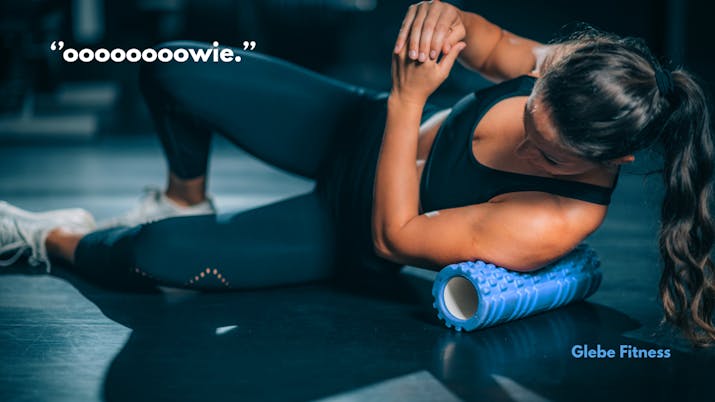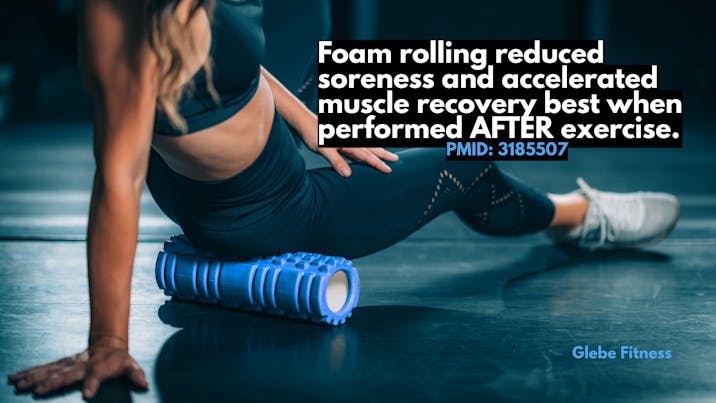If you’ve ever walked into a gym and seen someone contorting themselves over a tube of foam with pained determination, you’ve witnessed the modern ritual of foam rolling. It’s not a new dance move, but it is everywhere—from pro athletes to weekend warriors, everyone is obsessed with this deranged little pool-noodle. But despite its popularity, what do we really know about those colourful rollers, and why do so many swear by them?
Well, we do know that you tend to feel better after doing it. But we still don't know for sure what's happening when we do it.
I had this wild theory that maybe people were just using them to smuggle contraband. I saw it on Border Patrol once. We shouldn't rule that out, yet.
But I did find something genuinely interesting. Most of us reach for the foam roller before training, hoping for that sweet, sweet range-of-motion unlock. But here’s the plot twist: the research is piling up that foam rolling is actually most helpful after you've put your muscles through the wringer.
Here’s the science:
Hard training can leave you with delayed-onset muscle soreness (DOMS), muscle stiffness, and even a temporary loss of strength and coordination. All this can make you move like a robot that’s been left out in the rain—clunky, sore, and prone to tripping over your own feet. And, as the research points out, this can actually increase injury risk and mess with your ability to learn new movements.
So, scientists rounded up a bunch of eager, muscle-damage-prone volunteers and had them do some serious knee extensions (the kind that makes you question your life trajectory). Half got foam rolling right after, and the other half just sat around, probably reading this blog.
The results?
Foam rolling after exercise led to faster recovery from muscle soreness, quicker return of strength, and better proprioception (that’s your body’s ability to know where it is in space—super important for not walking into walls).
In other words, rolling after a workout helps you bounce back faster and feel less like a rusty Tin Man.
So, what’s the takeaway?
Roll after, not before. Save the foam roller for your cool-down, not your warm-up.
It’s quick and easy. Even a few minutes of rolling can make a big difference in how fast you recover.
Don’t expect miracles. You’ll still be sore, but you’ll be less sore, for less time, and you’ll feel less like a walking disaster.
It’s not just for athletes. Whether you’re lifting heavy, running, or just chasing toddlers around the house, a little post-workout rolling can help you feel better, faster.
So, stay limber, stay curious, and keep rolling—responsibly.
FOAM ROLLING, MUSCLE SORENESS, AND SMUGGLING.
Glebe Fitness > Brainwashing > Foam Rolling, Smuggling, and Muscle Soreness
16 June, 2025 - Estimated Reading Time: 1 min 50 sec
And why science says roll after, not before exercise.

CONTACT US
I'm located at the far end of Leichhardt street, pronounced ''like-arrt'' and spelled with not one, but two silent h's. Right?!
Anyway, it's a one-way street controlled by at least two brush turkeys with a taste for small dogs. Come alone and be vigilant.
Call me on 0411 139 061, or send a message on Whatsapp here.
Email: danny@glebefitness.com and join my list over there for cool stuff.
Sign up for my newsletter and get:



50% OFF your first personal training session
FREE access to the ''4 Fundamentals of Faster Fat Loss'' email series
Fitness tips and stories that'll make you chuckle, and laughing burns calories, YW
WHO IS THIS?
Hi, I'm ''Glebes BEST personal trainer'', and I've been called ''Danny James.'' I'm the owner and content person here at Glebe Fitness.
Come and train with me!
There are less expensive trainers. There are also smaller TV's, thinner sausages, and instant coffees.
References:
1. Naderi A, Rezvani MH, Degens H. Foam Rolling and Muscle and Joint Proprioception After Exercise-Induced Muscle Damage. J Athl Train. 2020 Jan;55(1):58-64. doi: 10.4085/1062-6050-459-18. Epub 2019 Dec 19. PMID: 31855077; PMCID: PMC6961644.
2. Drinkwater, E. J., Latella, C., Wilsmore, C., Bird, S. P., & Skein, M. (2019). Foam Rolling as a Recovery Tool Following Eccentric Exercise: Potential Mechanisms Underpinning Changes in Jump Performance. Frontiers in Physiology, 10, 451557. https://doi.org/10.3389/fphys.2019.00768
3. Dana, A., & Arabacı, R. (2025). The Impact of Foam Rolling on Recovery and Performance: A Systematic Review. Pamukkale Journal of Sport Sciences, 16(1), 253–270. https://dergipark.org.tr/en/download/article-file/4413541
4. P Pearcey, G. E., Bradbury-Squires, D. J., Kawamoto, E., Drinkwater, E. J., Behm, D. G., & Button, D. C. (2014). Foam Rolling for Delayed-Onset Muscle Soreness and Recovery of Dynamic Performance Measures. Journal of Athletic Training, 50(1), 5. https://doi.org/10.4085/1062-6050-50.1.01
YOU'RE AWESOME!
YOU DESERVE AWESOME EMAILS...


Next >>




